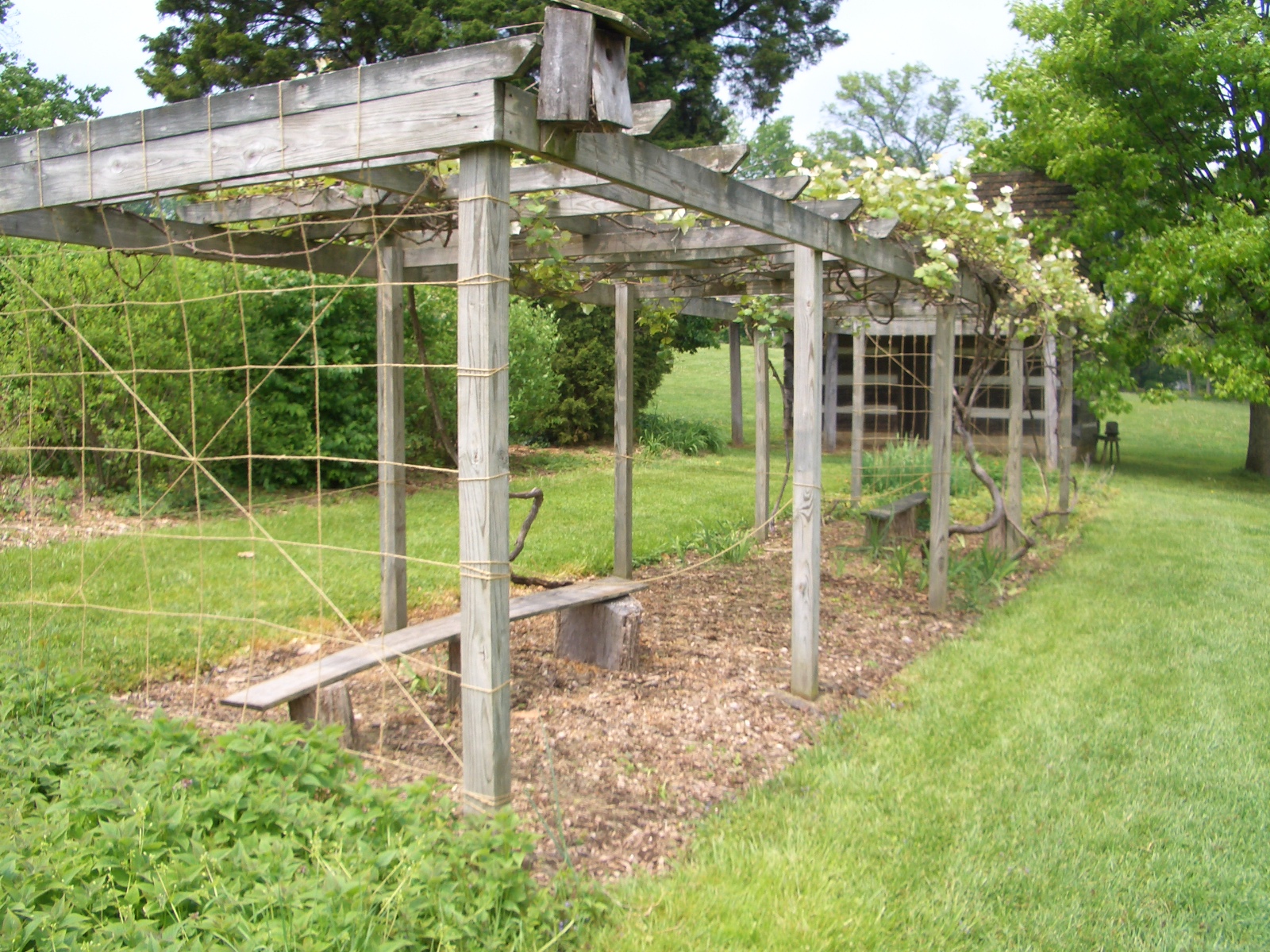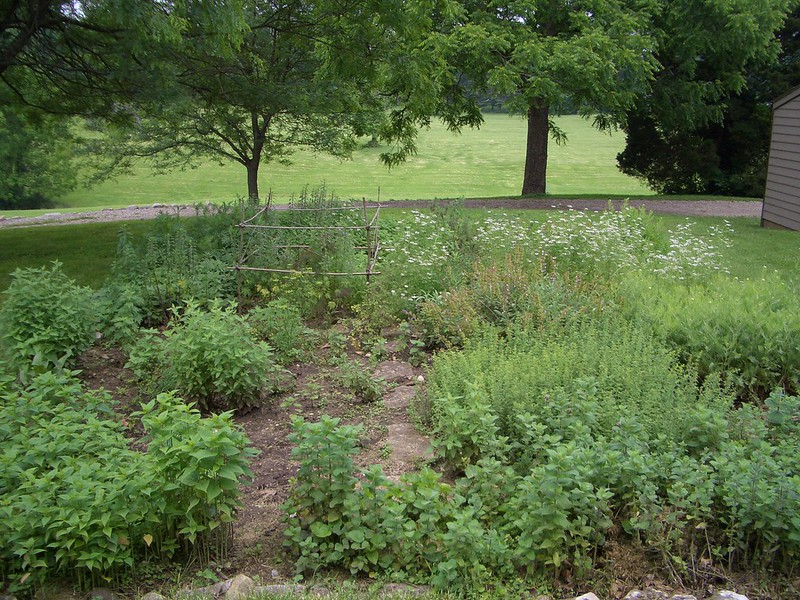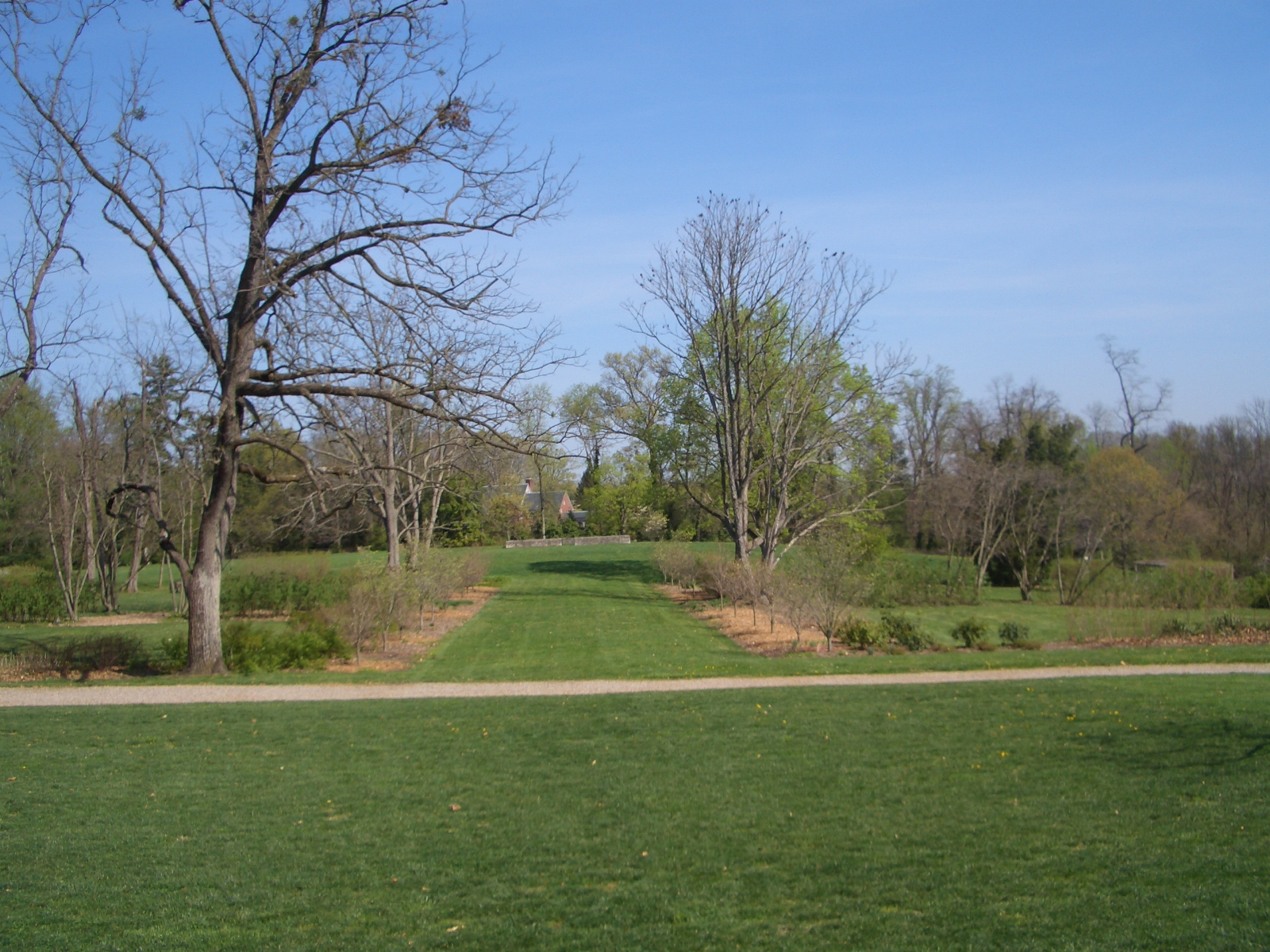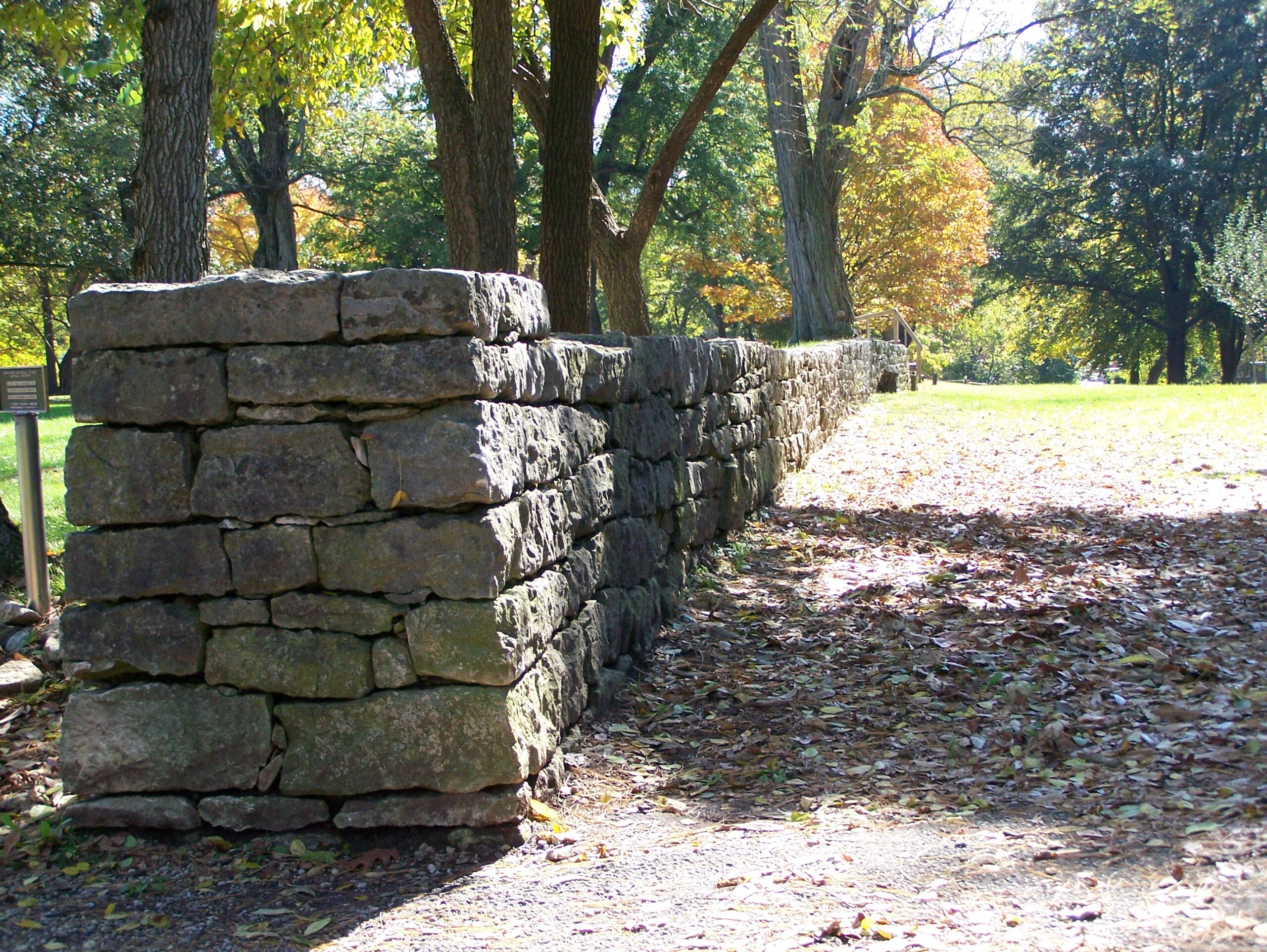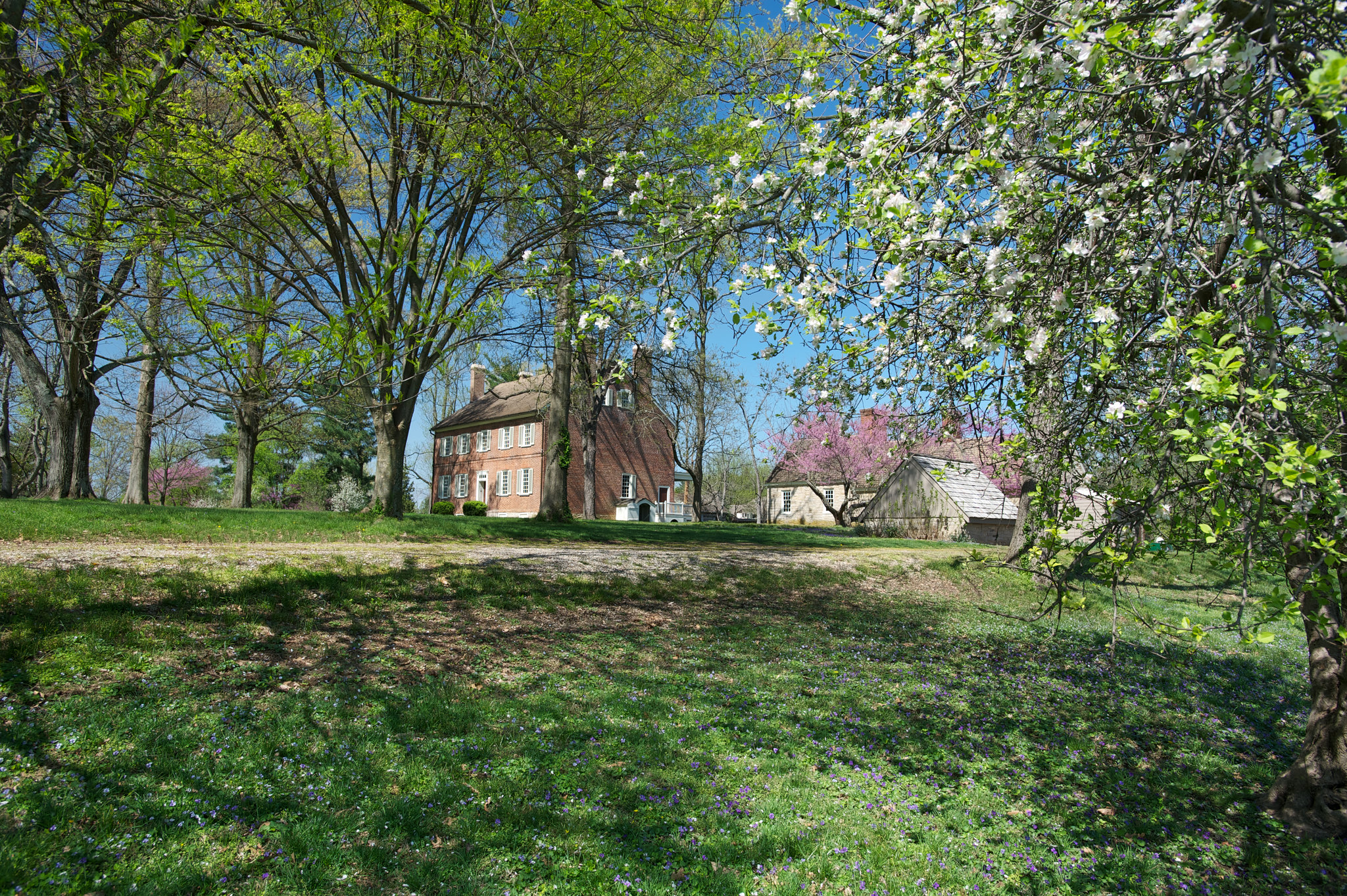Gardens & Grounds of Locust Grove
William Croghan’s Locust Grove featured a complex overlay of uses. As a gentleman’s country seat, it included formal and symmetrical elements declaring the status and taste of its owner. As a working farm, it included utilitarian buildings, fences, and other features for practical use to keep its inhabitants fed and sheltered.
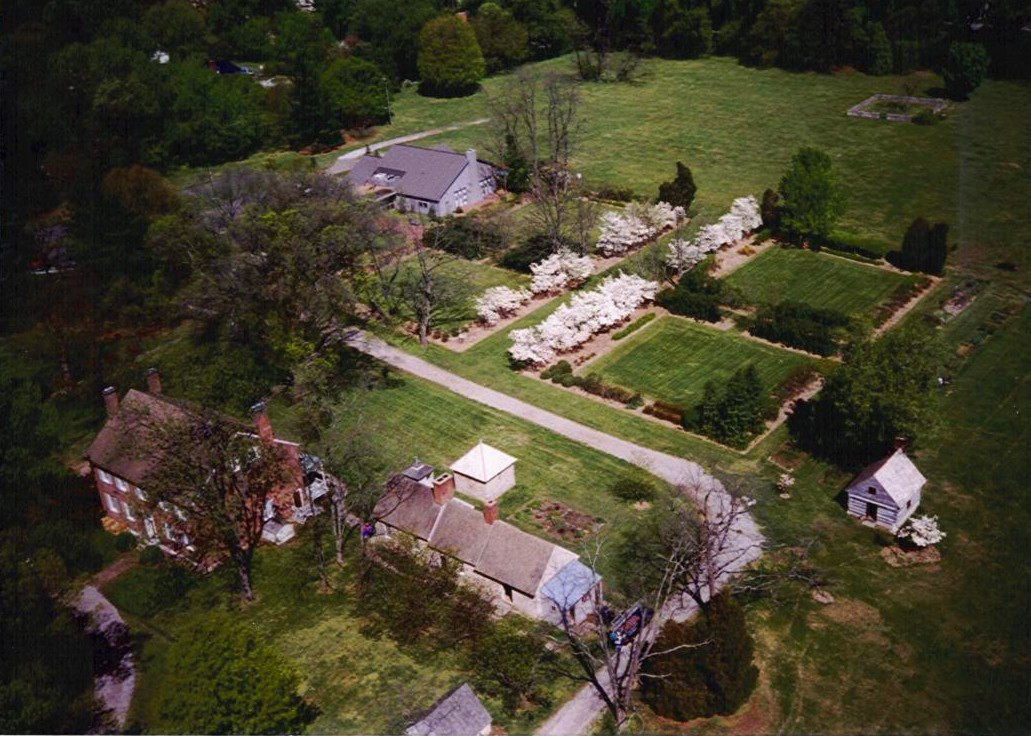
Gardens
The gardens at Locust Grove are foursquare quadrant gardens in the English style with ornamental flowers and shrubs, many of them period varieties.
Near the distillery grow heirloom vegetables such as squash, tomatoes, beans, and corn, and an arbor covered with grape vines.
The garden plan is based on that of nearby Soldier’s Retreat, another Clark family home.


